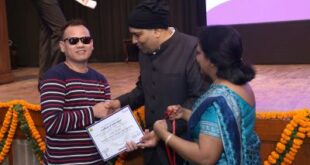Home to 16% of the world’s population, India – The world’s largest user of groundwater, is facing a huge concern over its groundwater levels.
Stored underground, protected from the sun and less likely to evaporate, groundwater becomes a major source of easily accessible water in the country. However, research shows that the groundwater levels in India have declined by 61% in just a span of 10 years from 2007-17!
Does groundwater really matter that much?
Yes! More than you may realize!
According to estimates, 50% of Indian urban residents and 85% of Indian rural residents depend on groundwater. The last 5 decades have witnessed an increase in the number of borewells from 10 lakh to a staggering 200 lakh!
The city of Bangalore alone currently has over 4 lakh borewells. With no management, structure, and minimal government involvement – the wells in the city are being sucked dry and left without any strategies for recharge. The city has already started facing major water scarcity issues and the times ahead do not look promising at all.
What will happen if the groundwater runs dry?
The millions of people who rely on these sources might lack access to pure, fresh water. Also, being a major source for agriculture, the scarcity of groundwater may result in gradual decline of food production as well. That’s not all.
The depletion of groundwater, that is interconnected with other water bodies like lakes and rivers, may result in reduced water flow. It is also known to provide support to the soil, the lack of which may lead to subsidence of the land. Sinkhole creation becomes more likely when water levels are low. Buildings could be at risk from rising sinkholes. Groundwater, in general, plays a critical role in biodiversity conservation.
But, what is the reason for this groundwater depletion?
These startling facts have a wide range of causes. To name a few, there is deforestation, excessive pumping, and pollution.
The launch of various schemes like Nal Se Jal, Jal Jeevan Mission etc, has helped provide piped water connections to about 47% of households in the rural areas. However, these efforts go in vain due to the poor infrastructure and maintenance of the same.
With an increasing demand of water for various needs and with limited surface water, the exploitation of groundwater is getting more severe.
What is the way forward?
Although not a recent concern faced by the country, the situation needs to be prioritized and given the utmost attention now more than ever! This means taking appropriate measures to ensure we prevent any possible water crisis in the future.
So, the questions that we need to ask now are- What can we do to alleviate this issue? Can it actually be reversed?
Yes, it can and as individuals, we can do the following;
Adopting rainwater harvesting to recharge groundwater. This has proven to be one of the simplest and most effective methods in conserving water. As the name suggests, in this process, we redirect, collect, filter, store and then utilize rainwater for our usage. It is also sent to recharge pits, after filtration, to maintain groundwater levels.
Another solution can be to revive lakes and wells. The benefits of this are several. These sources don’t just help recharge groundwater but the water can also be used for irrigation, industries etc.
And finally, as individuals, we can ensure we don’t waste water and reuse it as much as possible. Moreover, by educating people, restricting extraction of water in certain zones, and with more of such conservation and developmental activities, we might just be able to conserve the groundwater – the precious liquid that our lives depend on.
 Newspatrolling.com News cum Content Syndication Portal Online
Newspatrolling.com News cum Content Syndication Portal Online







